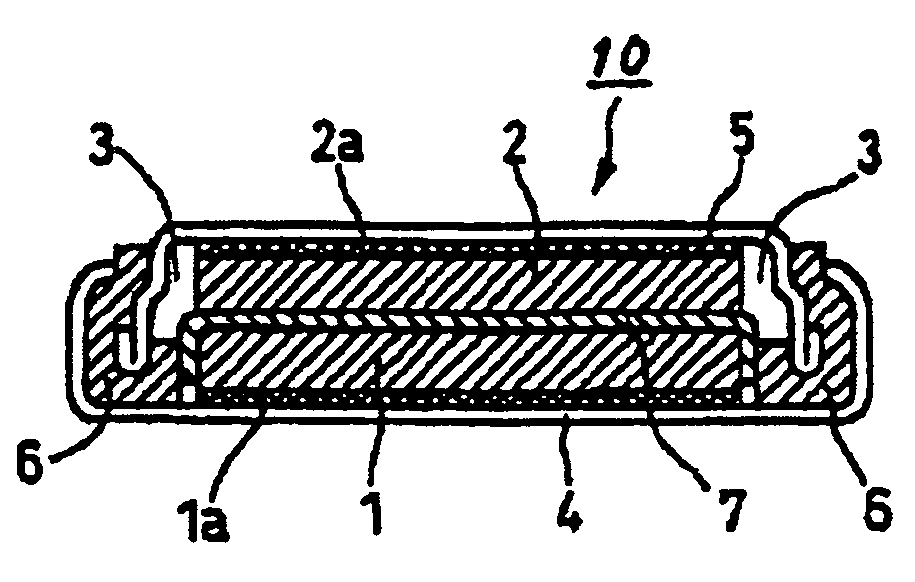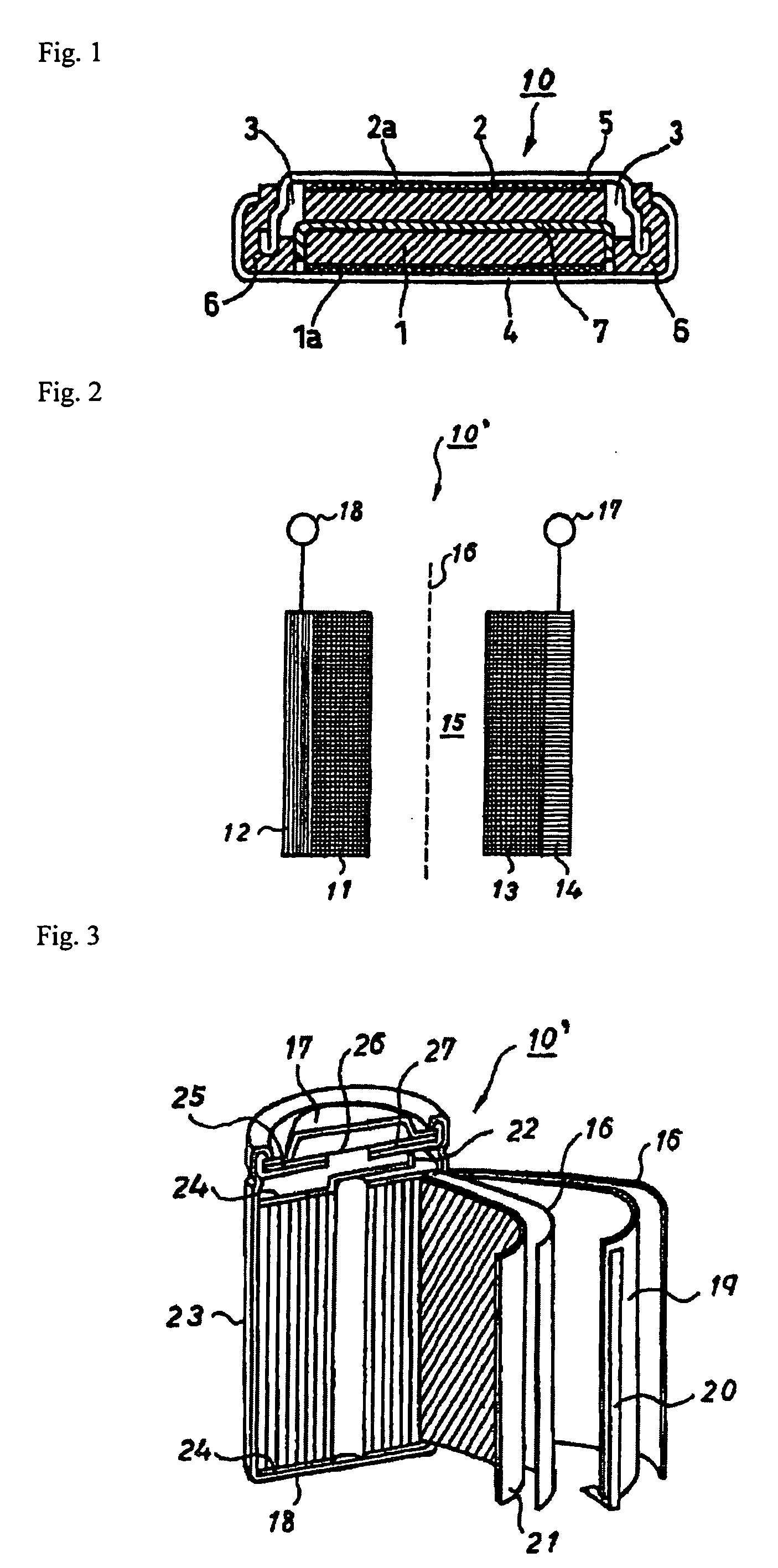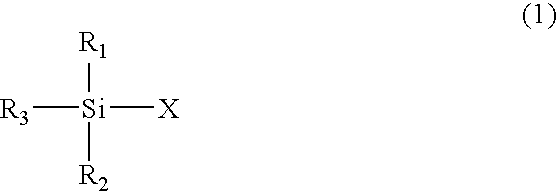Nonaqueous electrolyte and nonaqueous electrolyte secondary battery using the same
a technology of nonaqueous electrolyte and secondary battery, which is applied in the direction of non-aqueous electrolyte cells, cell components, electrochemical generators, etc., can solve the problems of battery stability, low temperature characteristics, and insufficient reliability as a stable source of power, so as to reduce the change in electrical capacity and internal resistance, reduce the increase in internal resistance, and high electrical capacity
- Summary
- Abstract
- Description
- Claims
- Application Information
AI Technical Summary
Benefits of technology
Problems solved by technology
Method used
Image
Examples
examples 1-1 to 1-12
AND COMPARATIVE EXAMPLES 1-1 TO 1-5
[0054] LiPF6 was dissolved in a mixed solvent consisting of 30 vol % of ethylene carbonate, 40 vol % of ethyl methyl carbonate, and 30 vol % of dimethyl carbonate in a concentration of 1 mol / l, and the test compound shown in Table 1 below was added to the solution to prepare a nonaqueous electrolyte.
[0055] A lithium secondary battery was assembled using the resulting nonaqueous electrolyte. The resulting battery was evaluated for (1) a discharge capacity retention (%) and (2) an internal resistance increase (%) by testing of cyclic characteristics and for (3) discharge capacity ratio (%) and (4) internal resistance ratio (%) by testing of low temperature characteristics in accordance with the following test methods. Cycle characteristics test method:
[0056] The lithium secondary battery was placed in a thermostat at 60° C. and charged at a constant current of 2.2 mA / cm2 to 4.1 V and then discharged at a constant current of 2.2 mA / cm2 to 3 V (cycle...
PUM
| Property | Measurement | Unit |
|---|---|---|
| thick | aaaaa | aaaaa |
| axial length | aaaaa | aaaaa |
| diameter | aaaaa | aaaaa |
Abstract
Description
Claims
Application Information
 Login to View More
Login to View More - R&D
- Intellectual Property
- Life Sciences
- Materials
- Tech Scout
- Unparalleled Data Quality
- Higher Quality Content
- 60% Fewer Hallucinations
Browse by: Latest US Patents, China's latest patents, Technical Efficacy Thesaurus, Application Domain, Technology Topic, Popular Technical Reports.
© 2025 PatSnap. All rights reserved.Legal|Privacy policy|Modern Slavery Act Transparency Statement|Sitemap|About US| Contact US: help@patsnap.com



